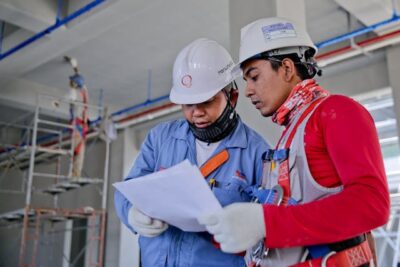In the vibrant expanse of Rio Grande Valley, the construction industry serves as the anchor for economic development and urban expansion. This year, several emerging trends are reshaping how projects are approached, highlighting a dynamic evolution in building technologies and methodologies. From embracing sustainable practices to integrating advanced technologies, these trends not only reflect local adaptations but also align with global shifts in the construction sector.
As we delve into the specifics, it’s clear that the industry’s future in Rio Grande Valley is being built on innovation and efficiency.
1. Sustainability and Green Building
Sustainability is no longer just a buzzword in the construction industry; it’s a necessary strategy. Builders are increasingly opting for materials that are not only environmentally friendly but also energy-efficient. Technologies such as solar panels are becoming commonplace, and many new buildings are designed to minimize energy consumption. These practices not only help reduce the environmental footprint but also offer long-term savings in energy costs, making them a smart investment for the future.
2. Safety Protocols
Recent years have underscored the importance of safety on construction sites. Most construction companies in the Rio Grande Valley implement new safety protocols to protect workers and ensure that construction projects adhere to the highest standards of safety. These include regular safety drills, the use of personal protective equipment, and rigorous compliance checks. Such measures not only prevent accidents but also foster a safety-first culture that’s crucial for the wellbeing of every construction worker involved in the projects.
3. Use of Prefabricated Materials
The use of prefabricated materials is revolutionizing the construction timeline, allowing projects to be completed faster than ever. This trend is particularly beneficial in areas where the demand for both residential and commercial buildings continues to grow. Prefabrication involves assembling components of a structure in a factory, which are then transported to the construction site for a quick assembly. This method not only speeds up the construction process but also reduces waste and increases the precision of building components, leading to higher quality structures.
4. Technological Integration
Technology is playing a pivotal role in modernizing construction sites. Tools like Building Information Modeling (BIM) are transforming the planning and management of construction projects, making them more efficient and less prone to costly errors. Drones, too, are frequently used to survey sites and monitor construction progress, offering a bird’s-eye view that ensures things are proceeding as planned. These technological advancements are not just fancy gadgets; they are essential tools that enhance accuracy and efficiency in construction projects.
5. Labor Shortages
Despite the boom in construction activities, some areas face significant challenges due to labor shortages. The shortage of skilled workers has become a critical issue, delaying many construction projects and increasing costs. Local firms are responding by investing in training programs to equip workers with the necessary skills quickly. Additionally, there are efforts to attract more young people into the industry through apprenticeships and attractive career opportunities, aiming to build a robust workforce that can meet the demands of the future.
6. Economic Factors
The construction industry is highly sensitive to economic fluctuations, which can significantly impact material costs and real estate demand. Recent economic trends have led to changes in the cost of raw materials like steel and lumber, directly affecting project budgets. Additionally, the real estate market is seeing varying degrees of demand across residential and commercial sectors, influencing what projects receive green lights. By understanding these economic conditions, local developers and builders can better plan their projects, securing the necessary resources at the most favorable prices and timing the market effectively.
7. Regulatory Changes
Regulatory changes are a constant in the construction industry, often designed to enhance safety, sustainability, or community integration. Updates to zoning laws and environmental regulations are shaping the way construction projects are carried out. For instance, new environmental laws require more rigorous assessments before projects can proceed, ensuring that new constructions are environmentally sustainable and less disruptive to local ecosystems. These regulatory shifts can pose challenges but also create opportunities for innovation within the industry.
8. Smart Buildings
The concept of smart buildings is gaining traction in Rio Grande Valley, with new projects incorporating advanced technologies to create spaces that are not only more energy-efficient but also more responsive to the needs of their occupants. These buildings use Internet of Things (IoT) technology to automate systems like heating, ventilation, air conditioning, and lighting, significantly reducing energy usage and improving occupant comfort. The integration of smart technologies in buildings is seen as a step towards future-proofing new constructions against evolving technological and environmental standards.
9. Infrastructure Renewal
Recognizing the critical role of robust infrastructure, Rio Grande Valley is investing heavily in the renewal and expansion of its foundational facilities. This includes major projects like bridge reconstructions, road expansions, and public transit improvements, aimed at enhancing connectivity and safety for all residents. Such investments not only improve daily life but also attract businesses to the region, boosting the local economy. These projects often require coordination between various governmental and private entities, showcasing the complex but rewarding nature of large-scale infrastructure development.
10. Public-Private Partnerships (PPPs)
Public-private partnerships are becoming a vital component of the construction landscape. These collaborations between government entities and private companies pool resources to fund and manage large projects that might be unfeasible for single entities to handle alone. PPPs have facilitated the development of significant infrastructure and housing projects, providing mutual benefits: public resources are used more efficiently, and private companies gain access to lucrative contracts and new markets. This model is proving essential in accelerating the pace of development in the region.
Conclusion
As we have explored, the construction industry is undergoing a transformative phase, driven by a mix of technological advancements, economic shifts, and regulatory updates. The trends of sustainability, technological integration, and smart buildings are not just passing phenomena; they are indicators of a deeper evolution within the industry aimed at creating more resilient, efficient, and sustainable construction practices. The challenges posed by labor shortages and economic variables are being met with innovative solutions that promise to sustain growth and development. With these trends, Rio Grande Valley is setting a blueprint for the future of construction that could well serve as a model for other regions. Embracing these trends will enable local industry players to not only survive but thrive in a rapidly changing environment.












